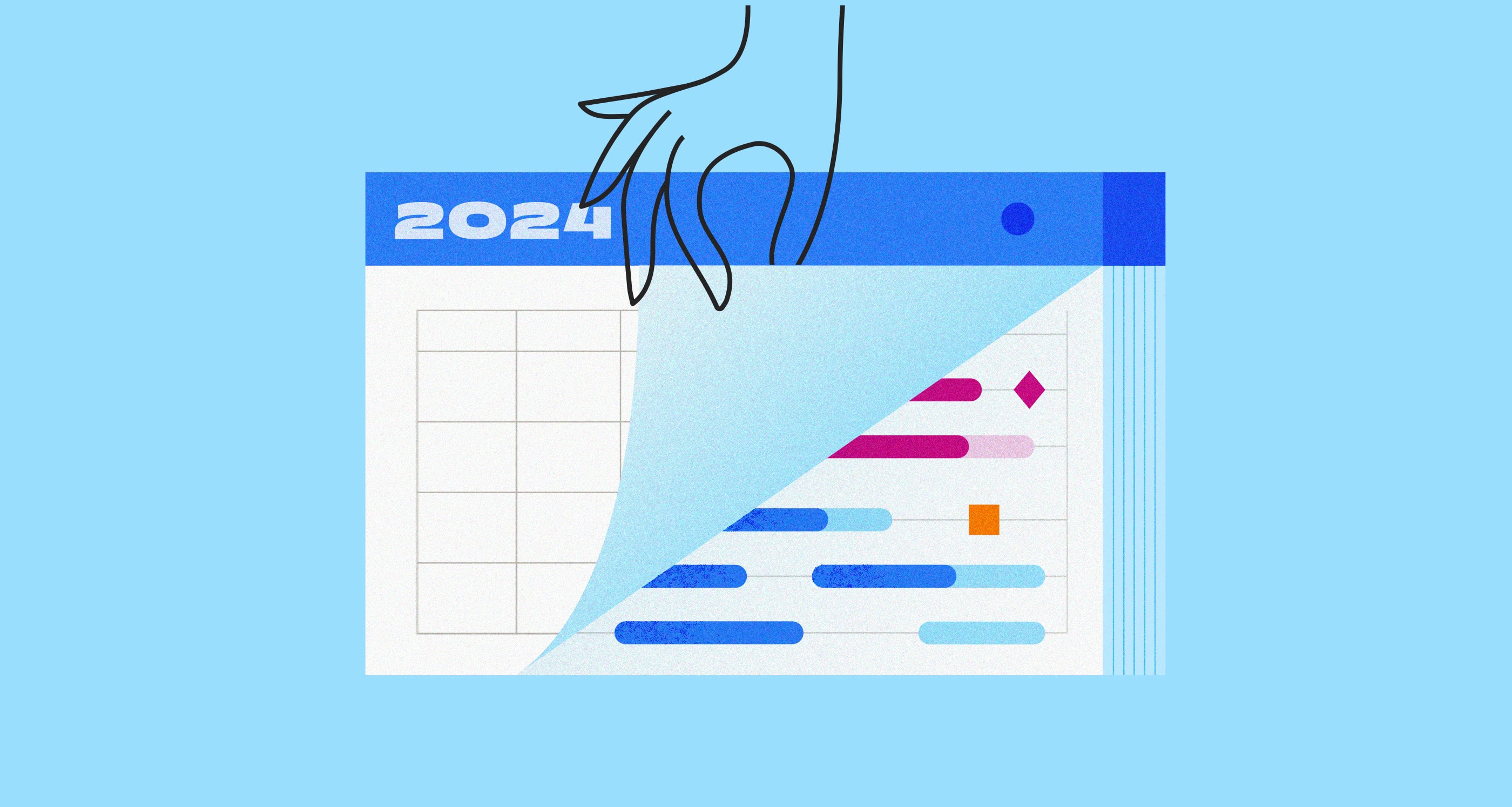As a business grows, there comes a point where the status quo is no longer enough. More than hiring new people or opening additional locations, you must rethink the company’s vision and develop an agile, strategic roadmap for turning it into a reality.
When you reach that turning point, you could integrate Scrum at Scale, Large Scale Scrum, or many other agile methodologies. And it’s challenging knowing which agile processes will work for you now and as your team grows.
For a tried-and-true approach, consider the Scaled Agile Framework (SAFeⓇ). SAFe is a detailed, customizable method for implementing agile principles across your organization.
Businesses worldwide have benefited from SAFe principles and techniques. And you can rest assured that you’ll have plenty of SAFe roadmaps to follow for a successful implementation, like our five-step guide below.
What’s SAFe?
SAFe is a set of principles and processes intended to guide businesses as they scale their agile practices. The creators designed this framework to promote alignment, collaboration, and delivery across multiple teams.
This framework organizes teams on four levels:
- Team: An individual group that practices traditional agile and lean processes to meet their goals.
- Program/Agile release train: Interconnected teams working on the same projects across business functions.
- Large solution: Multiple programs collaborating on related solutions.
- Portfolio: The highest level of the organization, this is where leaders focus on aligning the organization with an overarching strategy.
All four levels work under the same four guiding principles:
- Alignment
- Built-in quality
- Transparency
- Program increment (PI) execution
Every team uses a combination of lean and agile principles to collaborate during synchronized PIs that typically cover about 8–12 weeks of work. And this framework introduces the roles of the release train engineer (who leads agile release trains throughout project work) and the solution architect (who communicates a high-level vision for in-development solutions).
The benefits of implementing the SAFe
When appropriately implemented, SAFe benefits the entire organization because it focuses on reducing inefficiencies while improving team collaboration and offering more value to customers — a win-win for all.
This framework also gives a structured yet adaptable approach to managing large teams. It decreases bottlenecks, reduces waste, and improves communication. While the framework’s complexity can make it challenging to implement, the rewards often outweigh the downsides for large groups.
Here are some key benefits of following SAFe:
- Faster business development: This framework helps organizations deliver value more quickly by emphasizing an incremental and iterative approach.
- Alignment across teams: One of SAFe’s most significant advantages is its ability to align multiple teams across an organization. Through structured roles, events, and processes, this framework promotes synchronized planning and collaboration. And this cohesion helps leaders maintain a consistent vision and direction organization-wide.
- Flexibility: SAFe helps organizations respond to change through iterative development, a focus on value streams, and synchronized PIs. Focusing on this framework’s core values, such as alignment and transparency, also ensures teams pivot in ways that respect their core principles.
- Scalability: This framework offers a structured approach to growth by defining clear roles and scaling processes. While SAFe’s complexity might be too much for start-ups and small businesses to implement, it provides a detailed framework for medium–large-sized companies that plan to scale.
- More significant ROI: Organizations use this framework to improve efficiency, reduce waste, and focus on continuously enhancing output — all of which help increase the company’s ROI.
- Better risk management: SAFe provides processes to understand and manage risks proactively. Teams practice risk management every few weeks during increment planning, where they identify potential threats and create plans to address them.
What’s a roadmap for SAFe implementation?
A SAFe implementation roadmap provides a step-by-step guide for organizations to implement this framework. It’s a structured approach to help teams adapt, minimize risks, and enjoy successful implementation.
Organizations create a project roadmap for SAFe when they grow to a point where a small-scale agile roadmap begins to lose its value. Many agile and lean methodologies work well for smaller teams but fall apart when scaled across multiple departments.
As you work to implement SAFe in your organization, you’ll find it’s more than just a project management buzzword. This framework pulls some of the best aspects from agile project management and lean product development to help cross-functional teams drive efficiency and efficacy. Think of SAFe as a playbook for your business — it’s a way to help various teams coordinate to complete shared goals and deliver customer value.
A 5-step roadmap for implementing SAFe
This five-step SAFe implementation roadmap guides organizations through adopting and scaling the framework. Work with important external stakeholders and teammates and keep long-term, high-level company goals in mind as you follow this guide.
1. Appoint SAFe champions
Identify and train individuals to spearhead the transformation. Often called SAFe program consultants, these team members are change agents who guide the implementation and encourage everyone to participate.
You’ll also need to assign and train other roles, like Scrum Masters, product owners, and release train engineers. Ensure these agile leaders understand the SAFe principles and practices to help their teams adjust to changes.
2. Form cross-functional teams
Bring your champions and leaders together to build cohesive, cross-functional groups to work together in agile release trains/programs. You might not yet know what these teams will work on — that’ll become clearer during each train’s PI planning.
3. Identify value streams
Conduct value stream mapping to better understand how to increase efficiencies and what each team and train should work on. This involves creating process flowcharts that outline product and information flows as well as where customer demands and supplier materials come in. Audit these maps to determine where you can deliver more value to customers. Then, work with the leadership team to develop broad objectives project managers can break down into PIs to ensure every initiative ties into high-level business goals.
4. Conduct roadmap planning
Now, managers create agile product roadmaps that respect broad business milestones and SAFe’s principles and processes. These project roadmaps will break larger initiatives into smaller PIs teams and trains collaborate on to offer frequent, high-quality deliverables based on an iterative process that promotes frequent improvements.
5. Continue to improve
Build feedback loops into every area of the business. This includes business leaders checking in with product owners and release train engineers on how everyone’s handling this new framework as well as project managers scheduling frequent reviews into every project plan. You want to encourage a culture of continuous improvement, so teach employees on every level to pinpoint weaknesses and frequently implement improved processes.
The best roadmaps for your agile team
For any new organization-wide framework implementation, the right tools make all the difference. Create your roadmap with Roadmunk by Tempo to offer your team a detailed and intuitive overview of how to begin your SAFe implementation. Then, use Custom Charts to visualize the implementation’s performance and Timesheets to track individual employee progress.









